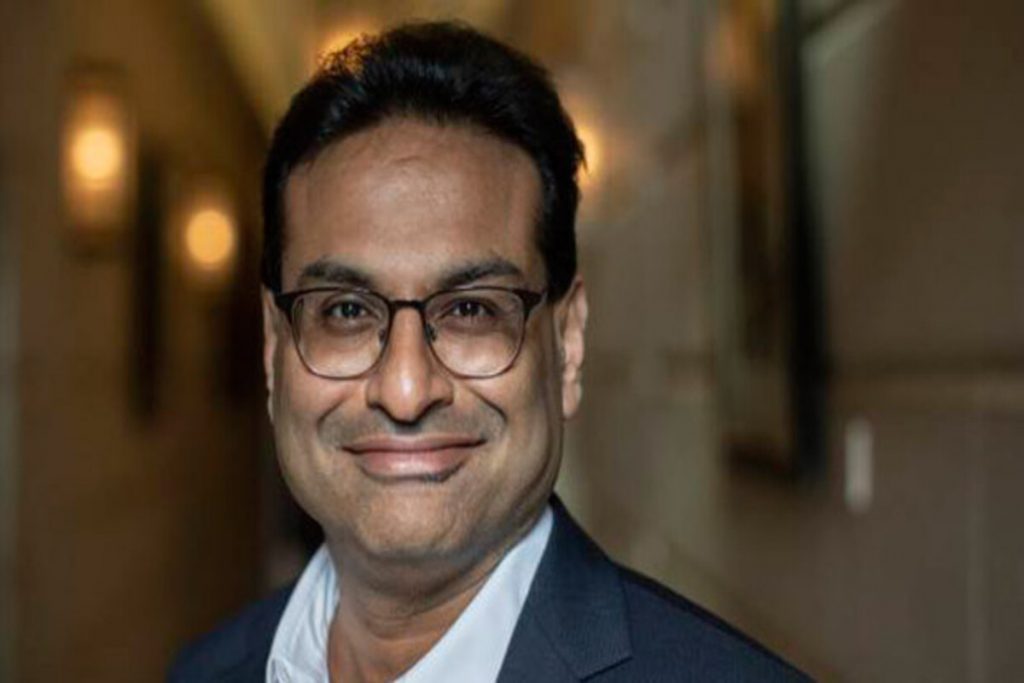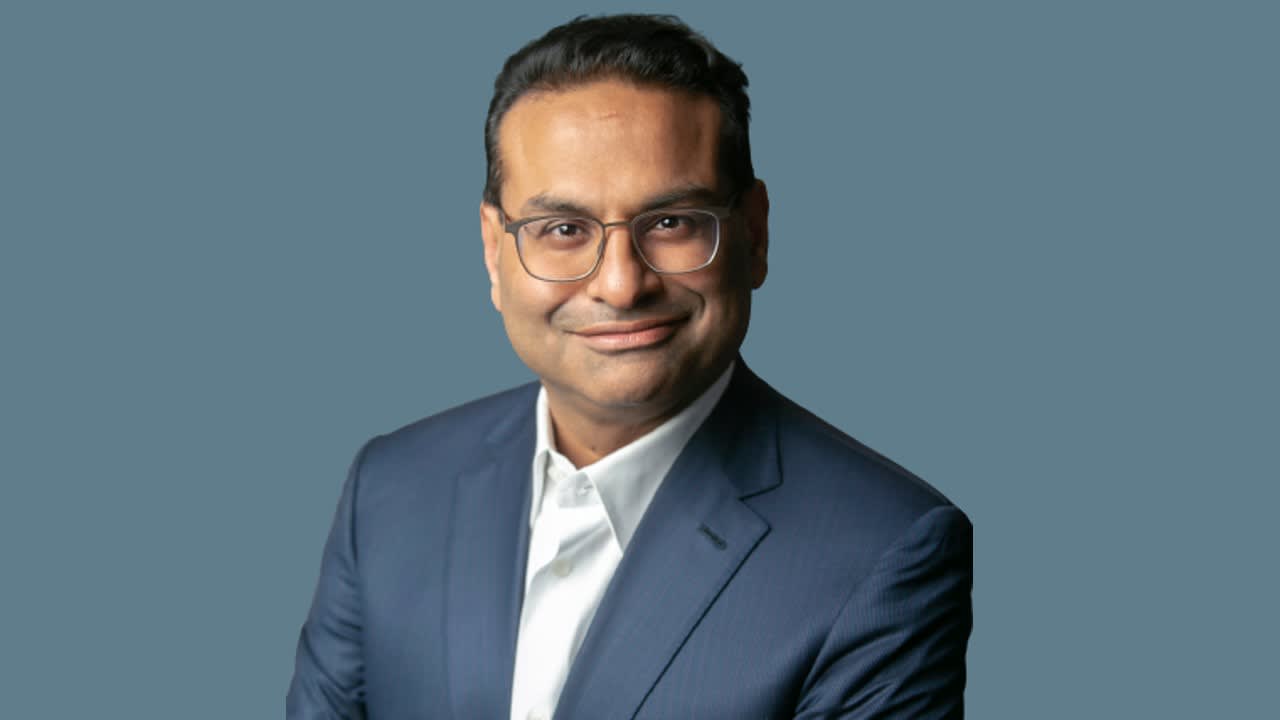Laxman Narasimhan’s Career Journey: Ceo Laxman Narasimhan

Laxman Narasimhan’s career path has been marked by a steady climb through leadership roles at prominent multinational corporations, demonstrating a consistent focus on driving growth and innovation. His journey has been characterized by a unique blend of strategic thinking, operational expertise, and a deep understanding of consumer markets.
Key Roles and Achievements
Narasimhan’s career trajectory showcases a progressive ascent through diverse industries, culminating in his appointment as Starbucks CEO.
- PepsiCo (1999-2012): Narasimhan’s early career at PepsiCo was instrumental in shaping his business acumen. He held several senior roles, including Vice President of Global Strategy and President of Quaker Foods North America. During his tenure, he spearheaded the launch of new product lines, implemented cost-cutting measures, and led strategic acquisitions, demonstrating his ability to navigate complex business environments and deliver tangible results.
- P&G (2012-2019): Narasimhan’s transition to Procter & Gamble (P&G) marked a significant step in his career. As Global Chief Commercial Officer, he played a pivotal role in driving global growth for the consumer goods giant. He spearheaded the development of innovative marketing strategies, strengthened customer relationships, and led the company’s digital transformation efforts. His success in this role further solidified his reputation as a visionary leader with a deep understanding of consumer trends.
- Reckitt Benckiser (2019-2022): Narasimhan’s appointment as CEO of Reckitt Benckiser, a leading global consumer health and hygiene company, marked a significant turning point in his career. He faced challenges such as integrating acquisitions, navigating supply chain disruptions, and responding to changing consumer preferences. During his tenure, he spearheaded a strategic transformation aimed at simplifying the company’s structure, focusing on core brands, and driving digital innovation.
- Starbucks (2022-Present): Narasimhan’s appointment as Starbucks CEO reflects his impressive track record and his ability to lead organizations through periods of change and growth. He faces the challenge of revitalizing Starbucks’ brand, enhancing customer experience, and driving sustainable growth. His experience in consumer-facing industries, coupled with his focus on innovation and digital transformation, positions him to address these challenges effectively.
Skills and Experiences Shaping Leadership Style
Narasimhan’s leadership style is characterized by a blend of strategic vision, operational excellence, and a strong focus on people. His experience across diverse industries has equipped him with a unique perspective on navigating complex business challenges.
- Strategic Thinking: Narasimhan’s ability to formulate and execute strategic plans has been a consistent theme throughout his career. He demonstrates a keen understanding of market trends and a capacity to anticipate future challenges, enabling him to position organizations for long-term success.
- Operational Excellence: Narasimhan’s emphasis on operational efficiency and effectiveness is evident in his approach to driving growth. He has a proven track record of streamlining processes, optimizing resource allocation, and delivering measurable results.
- Focus on People: Narasimhan places a high value on building strong teams and fostering a culture of collaboration. He believes in empowering employees and creating an environment where they can thrive. His leadership style is characterized by empathy, transparency, and a commitment to employee development.
Comparison with Previous Starbucks CEOs, Ceo laxman narasimhan
Narasimhan’s leadership approach is likely to differ from his predecessors in several key ways. While he shares a focus on customer experience and innovation with previous CEOs, his background in fast-moving consumer goods (FMCG) and his experience in leading digital transformations may bring a unique perspective to Starbucks.
- Howard Schultz: Schultz, Starbucks’ founder and former CEO, is known for his charismatic leadership style and his unwavering commitment to the company’s mission. Narasimhan’s leadership style may be more data-driven and focused on operational efficiency, reflecting his experience in larger, more complex organizations.
- Kevin Johnson: Johnson, Starbucks’ previous CEO, was known for his focus on technology and innovation. Narasimhan’s experience in digital transformation and his understanding of consumer trends may enable him to further accelerate Starbucks’ digital journey.
Starbucks under Narasimhan’s Leadership

Laxman Narasimhan took the reins of Starbucks in April 2023, inheriting a company navigating a complex landscape of shifting consumer preferences, economic uncertainty, and heightened competition. His leadership is poised to shape the future of Starbucks, focusing on both maintaining its iconic status and adapting to the evolving coffee industry.
Key Challenges and Opportunities
Narasimhan faces several key challenges and opportunities in his leadership role at Starbucks. These include:
- Maintaining Brand Relevance: Starbucks needs to remain relevant in a rapidly changing market, where consumers are increasingly seeking personalized experiences, ethical sourcing, and innovative offerings.
- Managing Costs and Inflation: Rising inflation and supply chain disruptions have impacted Starbucks’ profitability, requiring Narasimhan to find ways to optimize costs without compromising customer experience.
- Attracting and Retaining Talent: Starbucks, like many other companies, faces challenges in attracting and retaining skilled employees in a competitive labor market.
- Digital Transformation: Starbucks needs to continue its digital transformation to meet the expectations of tech-savvy customers, including seamless mobile ordering, personalized recommendations, and innovative payment options.
- Expanding Global Presence: Starbucks has a strong global presence, but it faces challenges in adapting its offerings to local tastes and preferences, while navigating regulatory environments and cultural nuances.
- Sustainability and Ethical Sourcing: Consumers are increasingly demanding sustainable practices from businesses. Starbucks needs to continue its efforts in ethical sourcing, waste reduction, and environmental responsibility.
Strategic Vision
Narasimhan’s strategic vision for Starbucks centers on “reimagining the Starbucks experience,” which involves a multi-pronged approach to address the challenges and opportunities Artikeld above. His vision focuses on:
- Customer-Centricity: Narasimhan emphasizes the importance of understanding and catering to the evolving needs and preferences of Starbucks customers. This includes personalized experiences, digital convenience, and a focus on creating a welcoming and inclusive environment.
- Innovation and Experimentation: Narasimhan encourages a culture of innovation and experimentation, where Starbucks can develop new products, services, and experiences to meet the evolving demands of its customer base.
- Sustainability and Ethical Sourcing: Narasimhan reinforces Starbucks’ commitment to sustainability and ethical sourcing, emphasizing the importance of responsible practices throughout the supply chain.
- Digital Transformation: Narasimhan recognizes the crucial role of technology in shaping the future of Starbucks. He plans to continue investing in digital platforms and capabilities to enhance customer experience, streamline operations, and drive growth.
- Global Expansion: Narasimhan sees global expansion as a key driver of growth for Starbucks. He plans to continue expanding into new markets, while adapting its offerings to local tastes and preferences.
Areas of Focus
Narasimhan’s leadership is expected to focus on several key areas, including:
- Innovation: Starbucks will continue to invest in innovation, developing new products, services, and experiences to cater to evolving consumer preferences. This includes exploring new coffee blends, alternative beverages, and personalized offerings.
- Sustainability: Starbucks will continue to prioritize sustainability throughout its operations, from sourcing coffee beans to reducing waste and promoting environmental responsibility. This includes supporting farmers, reducing its carbon footprint, and investing in renewable energy.
- Customer Experience: Narasimhan emphasizes the importance of providing a seamless and personalized customer experience. This includes enhancing digital capabilities, offering personalized recommendations, and creating a welcoming and inclusive environment.
- Talent Development: Narasimhan recognizes the importance of attracting and retaining skilled employees. He plans to invest in employee training and development programs to create a more engaged and motivated workforce.
Impact of Narasimhan’s Leadership on Starbucks

Laxman Narasimhan’s leadership at Starbucks has been marked by a strategic focus on enhancing the customer experience, driving operational efficiency, and fostering a culture of innovation. His efforts have had a tangible impact on the company’s financial performance, brand image, and employee engagement, positioning Starbucks for continued success in the dynamic coffee industry.
Financial Performance
Narasimhan’s leadership has been instrumental in driving Starbucks’ financial performance. His focus on cost optimization, revenue growth, and strategic investments has resulted in consistent profitability and shareholder value creation. Key initiatives that have contributed to Starbucks’ financial success include:
- Price Optimization: Starbucks has implemented a strategy of carefully adjusting prices to reflect changing market conditions and consumer preferences. This has helped the company maintain its premium pricing while maximizing revenue.
- Expansion and Innovation: Narasimhan has spearheaded initiatives to expand Starbucks’ global footprint, opening new stores in key markets and exploring emerging opportunities. He has also invested in product innovation, introducing new beverages, food items, and merchandise to cater to evolving consumer tastes.
- Digital Transformation: Starbucks has embraced digital technologies to enhance the customer experience and streamline operations. This includes investments in mobile ordering, loyalty programs, and personalized recommendations, which have resulted in increased customer engagement and loyalty.
Brand Image
Narasimhan’s leadership has played a crucial role in strengthening Starbucks’ brand image. His focus on sustainability, social responsibility, and customer-centricity has resonated with consumers, enhancing the company’s reputation as a responsible and ethical brand. Key initiatives that have contributed to Starbucks’ positive brand image include:
- Sustainability Commitment: Starbucks has made significant strides in its sustainability efforts, focusing on ethical sourcing of coffee beans, reducing its environmental footprint, and promoting responsible practices across its supply chain.
- Social Responsibility: Starbucks has actively engaged in initiatives to address social issues, including promoting diversity and inclusion, supporting communities, and empowering employees.
- Customer Experience: Narasimhan has emphasized the importance of providing a seamless and personalized customer experience, focusing on enhancing store design, employee training, and digital interactions.
Employee Engagement
Narasimhan’s leadership has prioritized employee engagement and empowerment. He has implemented initiatives to create a more inclusive and supportive work environment, recognizing the vital role employees play in delivering the Starbucks experience. Key initiatives that have contributed to employee engagement include:
- Employee Training and Development: Starbucks has invested in comprehensive training programs to equip employees with the skills and knowledge they need to succeed. This includes programs focused on customer service, product knowledge, and leadership development.
- Diversity and Inclusion: Starbucks has actively promoted diversity and inclusion in its workforce, creating a more welcoming and representative environment for all employees.
- Employee Recognition and Rewards: Starbucks has implemented programs to recognize and reward employees for their contributions, fostering a culture of appreciation and motivation.
Ceo laxman narasimhan – Laxman Narasimhan, the new CEO of Starbucks, is bringing a wealth of experience from his time at PepsiCo to the coffee giant. His focus on innovation and customer experience is sure to be a game-changer for the company, and his passion for coffee culture is evident in his leadership style.
You can learn more about the impact of ceo starbucks on the coffee industry and the future of the brand under Narasimhan’s leadership.
Laxman Narasimhan, the new CEO of Starbucks, has a lot on his plate as he navigates the complex world of coffee and customer experience. But he’s not the only one with big goals for the future. Investors are eagerly watching the performance of chipotle stock , a company that, like Starbucks, has seen its fair share of ups and downs in recent years.
Narasimhan’s experience with consumer brands like PepsiCo could be just what Starbucks needs to compete in this increasingly dynamic market.